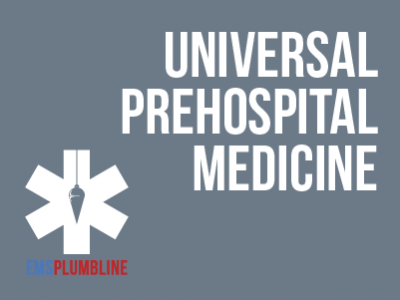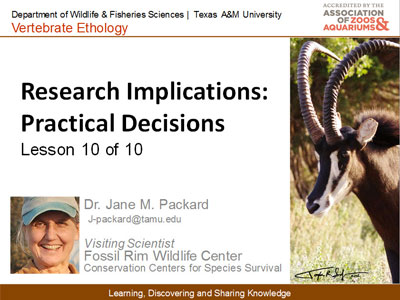 |
Review of Resuscitation |
1.50 |
Dr. Erik Rueckmann and Paramedic Sal Valdez sit down with Paramedic Michael Hoskins in this insightful interview. Their discussion will lead you through the concepts of resuscitation and the teamwork that is inherently integrated in the efforts to be successful.
Final Exam: This multiple-choice exam is designed to test your knowledge of the material you just reviewed. You have two attempts to gain an 70% or higher on this exam. Please take your time and answer each question carefully. |
 |
Resume Writing |
1.50 |
In this course, you will learn the process of creating a professional resume that stands out from the crowd. You will learn what a resume is, the different types of resumes, and how to write your own. |
 |
Response to Intervention (RTI) |
1.00 |
This course covers everything paraprofessionals and teachers need to know about Response to Intervention (RTI). This course will help you develop new knowledge about the different levels of interventions for all students and help you understand your role within the different levels of interventions. |
 |
Respiratory Protection Standard |
0.75 |
This course covers the basic principles of the respiratory standard as well as each requirement that makes up this program. |
 |
Respiratory Protection Awareness |
0.50 |
This course covers the different types of respirators and their purposes, as well as OSHA standards and the reasons why using a respirator would become necessary. |
 |
Respecting the Child's Perspective (CDA 3 & 4) |
2.00 |
Children and adults see the world very differently, and understanding child development helps you gain valuable insight through a child’s eyes. In this course, you will look at common situations and the ways children and adults may see them, taking into consideration what is developmentally appropriate for the children involved to find solutions that work for the children in care.
This course is also designed to be part of a Child Development Associate (CDA) Credential™ curriculum. It covers CDA Subject Area 3: Supporting Children's Social and Emotional Development, Subject Area 4: Strategies to Establish Productive Relationships with Families.
|
 |
Researching and Writing Grants |
1.50 |
This course covers the basics of grants, the grantseeking process, and writing grant applications. Topics include types and purposes of grants, finding a right “fit” between your program and grantmakers, how to initially approach grantmakers, the “dos and don’ts” of writing grants, and the budget and other documents you will need as part of a grant application. |
 |
Research Implications for Practical Decisions |
1.00 |
The researchers on your team have presented you with the results of their behavioral inquiry. Now you are ready to decide what this means in terms of adaptive management to meet your goals for the animals under your care. Listen as practitioners and researchers return to the "3 C's" to discuss the practical implications of a behavioral study |
 |
Research Design: Sampling Protocols |
1.00 |
Now that you have your behavioral research question fairly well defined, how does this translate into a sampling protocol with a sound study design? Learn to distinguish between observation rules and recording rules. This is where you decide whether you will observe one focal individual at a time, or an entire focal group. The recording rules are about whether you decide to record all occurrences of one type of behavior, or use an instantaneous time-sampling technique. In this webinar, you will learn the pros and cons of various combinations of these sampling rules. |
 |
Remote Learning in a Tiered Behavior Framework |
1.00 |
This course covers implementing strategies for remote learning in a tiered behavior framework. A different setting for learning requires adaptations to instruction, engagement, and response to students. School and family partnerships lay the foundation for supporting students in a Multi-Tiered System of Support (MTSS). |
 |
Relaciones Contenciosas (Spanish) Contentious Relationships |
1.50 |
Este curso le proporcionará las bases para mantener relaciones románticas saludables. También te permitirá reflexionar sobre las relaciones pasadas y actuales e identificar por qué fracasaron. Finalmente, te brindará las habilidades para reconocer las señales de alerta en posibles intereses amorosos y dentro de ti mismo. Este curso le enseñará a minimizar los efectos de las relaciones conflictivas en su vida, así como en la vida de sus hijos.
This course will provide you with the foundation for maintaining healthy romantic relationships. It will also allow you to reflect on past and current relationships and identify why they failed. Finally, it will give you the skills to recognize red flags in potential love interests and within yourself. This course will teach you to minimize the effects of contentious relationships on your life, as well as on the lives of your children. |
 |
Reducing Turnover in Childcare Settings: Strategies for Administrators |
1.00 |
This course covers strategies for administrators to reduce turnover in childcare settings. It is just one out of many educational courses we offer. This course will help you develop new knowledge about the childcare setting and help you better understand your role as an administrator. |
 |
Reducing Foodborne Illness Risk Factors in Food Service and Retail Establishments |
0.50 |
This course covers different risk factors that are insufficiently controlled in institutions, retail food, and restaurants. Recommendations to help these places control these risk factors are also given. |
 |
Reduce the Spread of Germs in Child Care Programs (CDA 1) |
2.00 |
Colds, stomach viruses, and ear infections top the list of common illnesses for young children. Young children in child care centers and homes tend to get these common illnesses more frequently than young children who are not in group care. In many child care settings, illness moves quickly from one child to another. This course examines how to reduce the spread of germs in child care programs and establish ways to keep young children and the adults who care for them healthy. This course is designed to be part of a Child Development Associate (CDA) Credential™ curriculum. It covers CDA Subject Area 1: Planning a Safe, Healthy Environment to Invite Learning. This course can also be taken as a stand-alone learning event, or as part of a broader early childhood education curriculum.
|
 |
Red Panda |
1.00 |
This course provides an introduction to red pandas, including an overview of physical characteristics, habitat, behavior, reproduction, and conservation. |
 |
Quality Management: Understanding Current Performance (Instructor Guide) |
1.00 |
In this course you will learn to: identify types of flow charts and create and analyze a flow chart, create and analyze a check sheet, create and interpret a histogram, create and interpret a run chart, and identify characteristics of a control chart.
This Instructor's Edition of this course includes notes and suggestions to assist you in presenting the material, whether in an in-person classroom setting or as an instructor-led online or distance-learning course. It also provides you with the answers to questions found in mid-lesson activities, as well as in the quiz that concludes the course. |
 |
Quality Management: Understanding Current Performance |
1.00 |
In this course you will learn to: identify types of flow charts and create and analyze a flow chart, create and analyze a check sheet, create and interpret a histogram, create and interpret a run chart, and identify characteristics of a control chart. |
 |
Quality Management: The Costs of Quality (Instructor Guide) |
0.50 |
Before the quality revolution that began in the United States in the 1980s, quality was frequently viewed as a goal that came at a higher price for production. However, the reality is that poor quality is a result of the ineffective use of resources, including wasted material and labor. Therefore, improved quality means better use of resources and lower costs.
In this course you will learn to: identify the relationship between quality and cost, the benefits of establishing quality requirements, management’s responsibilities for achieving conformance, and the costs of customer dissatisfaction.
This Instructor's Edition of this course includes notes and suggestions to assist you in presenting the material, whether in an in-person classroom setting or as an instructor-led online or distance-learning course. It also provides you with the answers to questions found in mid-lesson activities, as well as in the quiz that concludes the course. |
 |
Quality Management: The Costs Of Quality |
0.50 |
Before the quality revolution that began in the United States in the 1980s, quality was frequently viewed as a goal that came at a higher price for production. However, the reality is that poor quality is a result of the ineffective use of resources, including wasted material and labor. Therefore, improved quality means better use of resources and lower costs.
In this course you will learn to: identify the relationship between quality and cost, the benefits of establishing quality requirements, management’s responsibilities for achieving conformance, and the costs of customer dissatisfaction. |
 |
Quality Management: Preparing to Change Processes (Instructor Guide) |
0.75 |
Business process improvement is a basic managerial responsibility. Just as managers are responsible for employee performance appraisals and budgeting, they are also responsible for making continual improvements in their division or department.
Because improving business processes is an ongoing effort, management needs to control and coordinate processes to ensure their success. In addition, employees who are affected by improvement changes need active support from management.
In this course you will learn to: identify management goals in preparation to lead business process improvement, as well as plan improvements.
This Instructor's Edition of this course includes notes and suggestions to assist you in presenting the material, whether in an in-person classroom setting or as an instructor-led online or distance-learning course. It also provides you with the answers to questions found in mid-lesson activities, as well as in the quiz that concludes the course. |
 |
Quality Management: Preparing to Change Processes |
0.75 |
Business process improvement is a basic managerial responsibility. Just as managers are responsible for employee performance appraisals and budgeting, they are also responsible for making continual improvements in their division or department.
Because improving business processes is an ongoing effort, management needs to control and coordinate processes to ensure their success. In addition, employees who are affected by improvement changes need active support from management.
In this course you will learn to: identify management goals in preparation to lead business process improvement, as well as plan improvements. |
 |
Quality Management: Implementing Quality Changes (Instructor Guide) |
0.67 |
Understanding a process is the only way a process improvement team can effectively improve the process. The team must understand how the process currently functions before they can identify problems. In addition, in order to understand how potential changes will affect the process, the team needs to understand specific elements of the process, as well as the process as a whole.
In this course you will learn to: identify the elements of a process, as well as techniques used to streamline a process, and measure various aspects of a process.
This Instructor's Edition of this course includes notes and suggestions to assist you in presenting the material, whether in an in-person classroom setting or as an instructor-led online or distance-learning course. It also provides you with the answers to questions found in mid-lesson activities, as well as in the quiz that concludes the course. |
 |
Quality Management: Implementing Quality Changes |
0.67 |
Understanding a process is the only way a process improvement team can effectively improve the process. The team must understand how the process currently functions before they can identify problems. In addition, in order to understand how potential changes will affect the process, the team needs to understand specific elements of the process, as well as the process as a whole.
In this course you will learn to: identify the elements of a process, as well as techniques used to streamline a process, and measure various aspects of a process. |
 |
Quality Management: Ideas and Organization (Instructor Guide) |
0.84 |
Brainstorming works best when used by a group of four to nine people. When brainstorming, team members’ goals should be to break their existing patterns of thought by generating original and creative ideas.
In this course you will learn to: sequence and follow the steps for brainstorming, identify the purpose of affinity diagrams, construct activity network diagrams, and identify the benefits of using CPM and PERT charts to understand the critical path of a project.
This Instructor's Edition of this course includes notes and suggestions to assist you in presenting the material, whether in an in-person classroom setting or as an instructor-led online or distance-learning course. It also provides you with the answers to questions found in mid-lesson activities, as well as in the quiz that concludes the course. |
 |
Quality Management: Ideas and Organization |
0.84 |
Brainstorming works best when used by a group of four to nine people. When brainstorming, team members’ goals should be to break their existing patterns of thought by generating original and creative ideas.
In this course you will learn to: sequence and follow the steps for brainstorming, identify the purpose of affinity diagrams, construct activity network diagrams, and identify the benefits of using CPM and PERT charts to understand the critical path of a project. |


























